Lima is the capital of Peru—a Pacific‑coast metropolis where colonial history, world‑class food, and modern neighborhoods meet. If you’re flying to Machu Picchu, you’ll likely start here. This guide gives you the essentials in minutes: where Lima is, why it’s called the City of Kings, the best time to visit, which areas to stay in, how to get from the airport, how to get around, what to see, and simple safety tips.
Our local team shares practical advice you won’t find in brochures—where to catch sunset on the Malecón, when to explore the Historic Center, and how to order ceviche like a limeño. Use this page to plan your arrival day, then talk to an advisor when you’re ready to turn ideas into a smooth, stress‑free Peru trip.
Lima, known as the City of Kings
The capital city of Peru has a long and fascinating history many travelers don’t know. In this guide we explore the city’s key moments—from pre‑Hispanic cultures and the Inca presence in these valleys to its Spanish founding and modern character—so you understand what you’ll see and plan your visit with confidence.
It is located along the coast and is often called the “City of Kings” because Francisco Pizarro founded it on January 18, 1535, a date close to Epiphany or Three Kings’ Day (January 6). The name reflects that time and Lima’s early colonial role.
In addition, the city was dedicated to the Spanish King Charles V and his mother Queen Joanna (Joanna the Mad). However, no king ever ruled from Lima; the title became part of its identity rather than a literal royal seat.
Where is Peru Located?
Peru is a country in western South America and shares borders with Ecuador and Colombia to the north, Brazil to the east, Bolivia to the southeast, Chile to the south, and the Pacific Ocean to the west.
The country includes coastal deserts by the ocean, high Andes mountains, and the Amazon rainforest. Peru is the world’s 19th‑largest nation by area and one of the most populous in South America, which explains its rich variety of landscapes, wildlife, and travel experiences.
The Andean country was home to many ancient civilizations, including Caral, Mochica (Moche), Nazca, Chimú, and the Inca Empire. Each had its own capital or important cities across the territory. For all these reasons, Peru is diverse in languages and ethnic groups. Historically, its most important cities are Cusco and Lima.
What is the Capital of Peru?
Peru’s capital and largest city is Lima. The metropolitan area of Lima is home to more than 10 million people, making it one of the most populous cities in South America and a natural starting point for most Peru journeys.
The old Peruvian capital
From the 15th to the early 16th century, the Inca culture dominated much of South America. The Inca Empire, also known as Tawantinsuyo (the four provinces of the sun), controlled a vast territory from Colombia through Ecuador, Peru, and Bolivia to northern Chile and northwest Argentina. Cusco was the center of this great empire and remains the historical Peru capital.
The New Peru Capital
Francisco Pizarro, the conqueror of the Inca Empire, founded Lima City in 1535 as the City of Kings, partly because the date was close to January 6 (Epiphany). Over time, that ceremonial name fell into disuse and Lima became the official name for residents and visitors.
Where is Lima located?
Peru’s capital is located at a general elevation of 528 feet (161 meters) in the country’s central west. The Lima main square is approximately 505 feet (154 meters) above sea level, about 8 miles (13 km) inland from the Pacific Ocean in Peru’s coastal desert.
Although the “City of the Kings” was initially founded on the Rímac riverbank, today it extends across wide coastal desert areas from north to south. In the Lima/Callao metropolitan area, three main rivers—Chillón, Rímac, and Lurín—shape the valleys. The city grew rapidly in the 1980s and 1990s due to migration from the countryside during years of internal conflict.
Today, the capital city is one of the largest in South America, blending colonial landmarks, modern districts like Miraflores and Barranco, and a world‑class food scene that draws travelers from around the globe.
History of the capital of Peru
Lima before the Incas
Before the Incas, the area now known as Lima was home to several Indigenous cultures that left remarkable archaeological footprints. Among the most important cultures are:
| Civilization | Time Period | Location | Famous for: |
|---|---|---|---|
| Caral‑Supe Civilization | 3000 BCE – 1800 BCE | Norte Chico, north of the city | Monumental pyramid‑like platforms, planned urban spaces, and early complex society |
| Lima Culture | 100 CE – 650 CE | Central coast (Miraflores & Lima valleys) | Huaca Pucllana, a huge adobe‑brick pyramid with ceremonial and administrative sectors |
| Wari Empire | 600 CE – 1000 CE (approx.) | Central Andes (influence reached the coast) | Urban planning, road links, stone architecture, and fine textiles that influenced later cultures |
These cultures were part of a long sequence of complex societies in the Andes that predate the Inca Empire. Closer to Lima’s valleys, the Ichma (Ychsma) culture also flourished before the Incas (c. 1100–1470 CE), leaving adobe pyramids and expanding the sanctuary of Pachacámac. Together, they shaped the region’s architecture, farming systems, and social complexity.
Lima During the Inca Empire
Around the 15th century, the Inca Empire based in Cusco expanded to the central coast and integrated the valleys of the present‑day capital. By the time the Spanish arrived in the 16th century, the region was firmly under Inca control. Here’s what we know about the coast city during the Inca Empire:
| Topic | Description |
|---|---|
| Pachacámac | About 40 km southeast of the city, this sacred site was a major pilgrimage center long before the Incas. Once incorporated into Tahuantinsuyo, the Incas added temples (including the Temple of the Sun) and administrative quarters, integrating it into their religion and governance. |
| Inca Trails | The region was connected by the Qhapaq Ñan (Inca road system), which linked valleys, tambos (way stations), and storage sites, enabling rapid movement of goods, messages, and troops across the empire. |
| Administration | The empire was divided into four suyus; the area of the current capital belonged to Chinchaysuyu. Local communities contributed to the state through the mita labor system, supporting construction, agriculture, and state projects. |
Influence on Local Cultures: In the capital area, the local god Pachacámac was syncretized with the Inca sun god, Inti. The Incas also relocated loyal servants known as yanaconas and established administrative centers to ensure stability and control.
Lima During the Conquest of Peru
The capital of Peru played a crucial role in the Spanish conquest. The Spanish conquistador Francisco Pizarro founded the city on January 18, 1535, and it soon became the base for Spanish colonization on the Pacific coast.
Below is a brief list of key events during the Conquest of Peru:
Date | Event |
|---|---|
1532 | Inca ruler Atahualpa was captured in Cajamarca by Spanish forces led by Francisco Pizarro. |
April 1534 | Pizarro established the first provisional capital at Jauja in the Andes, noted for its pleasant climate. |
December 1534 | The administration and treasure caravans were ordered to move from Jauja toward the coast near Callao to secure a sea link. |
January 18, 1535 | Foundation of Lima as the “City of the Kings,” which became the colony’s new capital. |
1536 | Manco Inca’s rebellion reached the coast; Captain Quiso Yupanqui led assaults near the new capital and was killed during the fighting. |
June 26, 1541 | Francisco Pizarro was assassinated in Lima by the Almagristas faction led by Diego de Almagro “el Mozo.” |
Lima during the Colony
During the colonial period, “The City of Kings” served as the capital of the Viceroyalty of Peru—the center of Spanish power in South America. From the mid‑16th to early 19th centuries, the capital grew in size, wealth, and influence. Key features of this era include:
Aspect | Description |
|---|---|
Establishment as capital | After its founding in 1535, the capital quickly became the administrative, political, and economic core of the colony. The Viceroyalty of Peru (1542) governed territory from present‑day Panama to parts of Chile and Argentina. |
Architectural development | The city saw major building campaigns in Spanish Baroque and local styles. Highlights include the Cathedral of Lima, the Monastery of San Francisco, and Palacio de Torre Tagle, plus distinctive wooden balconies that line many colonial streets. |
Cultural hub | Lima became a leading center of learning. The University of San Marcos, founded in 1551, is often cited as the oldest university in the Americas. Printing presses, religious orders, and scholarly circles flourished. |
Economic importance | The capital was South America’s key commercial hub. The Port of Callao served as the main outlet for silver from Potosí (in present‑day Bolivia) and a strategic stop on routes linking Spain, the Pacific, and Asia. |
Social structure | Colonial society was highly stratified. Peninsulares (born in Spain) held top positions, followed by criollos (American‑born of Spanish descent), then mestizos, with Indigenous peoples and enslaved Africans facing the harshest conditions. |
Revolts and uprisings | Resistance to colonial rule recurred across the Andes, culminating in major movements such as the Túpac Amaru II rebellion (1780–1781), which echoed in the capital’s political debates. |
Lima, during the Republican era
The Republican Era in Peru began in 1821 with the declaration of independence from Spain. The Peru capital played a decisive role throughout this period. Key developments include:
Aspect | Description |
|---|---|
Independence | Peru declared independence on July 28, 1821, and Lima became the new republic’s capital. General José de San Martín proclaimed it in the Plaza Mayor. |
Conflicts and changes in power | The early republic faced instability, with shifts between centralist and federalist visions. The capital of Peru was often the stage for these political struggles and reforms. |
War of the Pacific | From 1879 to 1884, Peru fought Chile; Lima was occupied from 1881 to 1883, leaving deep economic and political effects on the city. |
Economic & infrastructure growth | Despite turmoil, exports—especially guano—financed modernization: new public buildings, transport systems, and urban expansion reshaped the capital. |
Cultural development | The coastal city remained a cultural hub. New districts appeared, and architecture diversified with French and Italian influences alongside republican civic monuments. |
Population growth & migration | Waves of internal migration—especially in the 20th century—expanded the urban area as people moved to the capital seeking opportunity. |
Late‑20th‑century conflicts | Economic crises and internal conflict—particularly violence linked to the Shining Path (Sendero Luminoso)—affected daily life until the 1990s. |
Post‑conflict era | Since the 2000s, Lima has seen growth and new infrastructure, hosting events like the 2019 Pan American Games. Challenges remain—inequality and urban planning—but the city continues to evolve as the dynamic capital of Peru. |
COVID‑19 pandemic | The most populous city in Peru was heavily affected by COVID‑19, prompting strict health measures such as lockdowns, curfews, and limits on non‑essential activities to control the spread. |
How to Get Around Lima
Moving through Lima can be challenging, especially when traffic peaks at rush hour. Beyond traditional street taxis, there’s a reliable mix of budget‑friendly public and private options that help you explore the Peruvian capital with greater safety, predictability, and ease—so you spend more time enjoying the city and less time stuck on the road.
Taxi app applications
Rather than hailing a taxi on the street, many residents and visitors choose ride‑hailing apps such as Uber, Cabify, DiDi, and Beat (availability may vary). These services show the fare upfront, the driver’s profile and license plate, and let you share your route in real time with a trusted contact—features that add convenience and an extra layer of security.
They’re especially useful at night or when traveling between popular districts like Miraflores, Barranco, and San Isidro. Prices are usually competitive, pickup points are easy to set, and overall service quality is more consistent than informal street taxis. Always confirm the plate matches the app, sit in the back seat, and buckle up.
Walking and authorized taxis
Lima has several areas that are pleasant to walk during the day, including the Miraflores seaside boardwalk (Malecón), central Barranco, and well‑traveled sections of the historic center. For short distances, walking lets you take in ocean views, parks, and street art while avoiding traffic altogether—just use crosswalks and pedestrian bridges where available.
When you need a car from a hotel, restaurant, or attraction, request an authorized taxi through the establishment or a verified app as above. Choose marked vehicles, check ID, and avoid unmarked cars. If you’re paying cash, ask the fare before you start; otherwise, let the app handle the charge.
Public transport options
One of the most practical ways to move around the city is the Metropolitano, a rapid bus system that runs on exclusive lanes. It links key districts such as Downtown Lima, Miraflores, Barranco, San Isidro, and Chorrillos. You’ll need a rechargeable card (sold at stations). Dedicated corridors help bypass congestion on the main avenues.
You can also use the Complementary Corridors, a network of color‑coded bus routes (blue, red, purple, yellow, and green). They’re affordable and safe when you board at official stops; expect slower service at peak times and keep your bag in front where you can see it.
The corridors connect with the Lima subway, an electric train in its first stage of operation (Line 1) that crosses Lima from south to north. It’s fast and frequent but does not reach the coastal districts, so you’ll connect by bus or taxi to places like Miraflores and Barranco.
Pro tip...
Plan trips outside peak periods—roughly 07:00–09:00 and 17:00–20:00—and combine modes based on your route (walk + Metropolitano, or Metro + rideshare). A little planning and a few extra minutes of buffer time can greatly improve your experience in Lima.
Lima Peru safety
As with any large city, Lima has a few areas that aren’t ideal for strolling—often called “red zones.” The good news: these are far from the main visitor districts where most hotels, attractions, and restaurants are found, such as Miraflores, Barranco, Surco, and San Isidro. Stay aware, stick to busy, well‑lit streets, and follow the simple tips below to keep your visit smooth and stress‑free.
Safety pointers to keep in mind:
Phones and street awareness
Keep your mobile phone tucked away while walking, especially near curbs, bus doors, and crowded corners. Use it inside hotels, attractions, restaurants, and in registered taxis or rideshares. Wear a cross‑body bag, avoid flashy jewelry, and keep cameras secured. When you stop to check maps, step into a shop entrance or café rather than pausing on the sidewalk.
Move in safe districts
Focus your time in well‑traveled areas like Miraflores, Surco, Barranco, and San Isidro. If you plan to visit the historic center, go by day and consider going with a tour guide and private transportation. At night, use rideshare or authorized taxis between districts and avoid quiet side streets.
Payments and tipping
You can pay with credit cards or reputable payment apps when buying goods or booking services in the capital of Peru. Lima has broad adoption of electronic payments—most restaurants, hotels, and many attractions accept cards. Carry a small amount of cash for markets and tips; tipping isn’t mandatory in the Peruvian capital, but 5–10% is appreciated when service is not included.
Currency exchange without hassles
If you need to exchange money, use bank branches or licensed exchange houses; avoid changing money on the street. ATMs inside banks and malls are safer than stand‑alone machines. Count money discreetly, keep receipts, and when paying by card, choose to be charged in soles to avoid costly dynamic currency conversion.
Health care and insurance support
The capital has a good number of private clinics and hospitals with solid standards of care. If you feel unwell, contact your travel insurer first—many have agreements with local centers and can coordinate visits and billing. Keep a copy of your passport, insurance details, and emergency contacts handy; pharmacies (boticas) are widely available for basic needs.
Guided visits and organized services
For big‑city exploring, booking a travel agency service or packaged tour is a smart move. A professional guide who knows the area helps you use time efficiently, choose safe routes, and time visits for the best light and least crowds—and door‑to‑door transport keeps logistics simple.
By following these steps, you can focus on Lima’s food, history, and coastline while keeping your plans safe, simple, and enjoyable.
What are Lima's main Tourist Attractions?
The current Andean capital has a deep history that reaches far beyond the Inca Empire, and there are many ancient and colonial sites to explore. The Plaza de Armas (Lima’s Main Square) anchors the historic center, framed by the Cathedral, the Government Palace, and elegant balconies. Other must‑see landmarks include Huaca Pucllana—a monumental adobe pyramid in Miraflores—the Monastery of San Francisco with its famous catacombs, and the Larco Museum, home to a world‑class collection of pre‑Columbian art.
The Peruvian capital is also a great place to enjoy Peruvian food. You’ll find traditional dishes such as ceviche, lomo saltado, and papa a la huancaína alongside acclaimed fusion cuisines (Nikkei and Chifa). Beyond history and food, Lima is known for its coastline: the Costa Verde (Green Coast) strings together cliffside parks, pebble beaches, and surf breaks. Miraflores is the most popular oceanfront district, with hotels, restaurants, shops, and plenty of activities—paragliding, surfing, stand‑up paddleboarding, and kayaking.
Pachacamac: The Pre-Inca Site in Lima
Pachacamac is the city’s largest and most important archaeological complex, located in the Lurín district. It covers roughly 465.32 hectares (with a perimeter of about 12,925 meters) and is overseen by Peru’s Ministry of Culture. The on‑site museum holds more than 6,500 pre‑Hispanic pieces—ceramics, wood, metal, and textiles—with the carved Idol of Pachacamac among its icons.
Pachacamac derives from Quechua: pacha (“earth/world”) and camac (“creator”). For centuries, pilgrims from across the Andes came to consult its renowned oracle. The sanctuary includes the Temple of Pachacamac and later Inca additions such as the Temple of the Sun. Allow time for both the museum and the site trail; bring water, a hat, and sunscreen for the coastal desert sun.
The Lima Culture first occupied Pachacamac and built significant temples and oracles visited by people from across the Andes. From about 600 to 1000 AD, the Wari culture expanded the complex and increased its regional importance.
By the 1470s, the Incas had conquered and incorporated the region. By 1533, Pachacamac was the most important religious center on Peru’s coast—its prestige noted in early Spanish chronicles.
Sacred City of Caral-Supe
The Sacred City of Caral‑Supe—a 5,000‑year‑old, 626‑hectare archaeological complex—lies about 182 km north of the capital in Barranca Province, overlooking the fertile Supe River valley. It is often described as the oldest civilization in the Americas.
This vast site dates back some five millennia and offers an extraordinary window into early Andean life. Though less famous than Machu Picchu or the Nazca Lines, Caral is a cornerstone of Peru’s heritage. Excavations have uncovered pyramids, sunken circular plazas, administrative buildings, and domestic areas. Today, visitors can walk marked paths to view temples, pyramids, and residential sectors while learning how early Peruvians organized urban life.
Caral was inscribed as a UNESCO World Heritage Site in 2009.
Rafael Larco Herrera Archaeological Museum
The Larco Museum is a privately run pre‑Columbian art museum in Lima’s Pueblo Libre district, housed in an 18th‑century viceregal building. Its galleries are arranged chronologically, offering a clear overview of 5,000 years of pre‑Columbian history. The museum is also famous for its unique gallery of erotic pottery.
Officially the Rafael Larco Herrera Archaeological Museum, Larco hosts a collection of more than 45,000 objects from cultures such as the Moche, Chimú, Nazca, and Inca. Housed in a 17th–18th‑century mansion surrounded by gardens, the exhibits include masterful ceramics, gold and silver artifacts, stone sculpture, and rotating temporary shows. A sister institution, the Museo de Arte Precolombino in Cusco, displays part of the collection. Consider visiting in the late afternoon and staying for dinner in the on‑site café.
The Larco Museum is one of the most insightful places to grasp the art and symbolism of the pre‑Columbian Americas. Its educational approach and open storage make it a favorite among travelers—and its partnership with the Cusco museum extends access to the wider Andes.
The Water Magic Circuit
Opened on July 26, 2007, the Magical Water Circuit in Parque de la Reserva has become a symbol of Lima’s revival of public spaces. Thirteen interactive fountains combine music, water, light, and laser projections for a dazzling nighttime show—great for families and photo lovers. Arrive near sunset to enjoy the park and then the evening displays.
Lima Main Square
The Main Square of Lima, also called the Plaza de Armas, has been the heart of the city since its layout in 1535. Set within the Historic Centre, it is surrounded by the Cathedral, the Presidential (Government) Palace, and City Hall. The square hosts civic ceremonies, parades, and cultural events and is a favorite place to sit, people‑watch, and admire colonial balconies. Major earthquakes over the centuries reshaped several buildings, including the Cathedral, leading to the harmonious ensemble you see today.
The Plaza de Armas is where José de San Martín proclaimed Peru’s independence on July 28, 1821—a milestone now celebrated nationwide as Independence Day. Standing here connects you to the turning points of Peruvian history before you continue your journey to the rest of the capital and beyond.
Tours in Lima and nearby
Lima City tour
Explore the best of Lima’s historic center on a half‑day or full‑day Lima City tour. We recommend booking a trusted tour company with private transportation and a local guide so you can move efficiently and learn the stories behind each site. Typical highlights include Plaza San Martin, the Convent of San Francisco & Catacombs (Museo Convento San Francisco y Catacumbas), Plaza de Armas (Plaza Mayor), and the Larco Museum (Rafael Larco Herrera), plus time for photos along the way.
Swim with sea lions at Palomino's Island
The Palomino Islands (often called Palomino’s Island) lie off the port of Callao and shelter large colonies of sea lions and seabirds. After reaching Callao, a boat ride of about 40 minutes brings you to the viewing area, where you can observe or swim with sea lions under crew supervision. Bring a swimsuit, towel, and sunscreen; morning or early‑afternoon departures usually offer the calmest seas.
A full-day tour to Caral
Set aside a full day to visit Caral with a private van and a tour guide. The drive to the Supe Valley takes roughly 3.5 hours each way; once there, walk marked paths to view ancient pyramids and plazas. Many travelers stop in Huacho for lunch and, time permitting, a brief beach visit before returning to Lima.
Culinary Tour
Peru is one of the world’s top culinary destinations, and the current Peruvian capital is home to several of the best restaurants on the continent. Spend a morning with a chef at local markets, then join a hands‑on class to prepare favorites like ceviche, lomo saltado, and papa a la huancaína—with tasting notes and simple recipes to try at home.
Lima, City Tour By Night + Magic Water Circuit
See the city center after dark on a guided evening walk and then visit the Magic Water Circuit in Parque de la Reserva. The illuminated plazas and balcony‑lined streets feel atmospheric at night, and the fountain show blends music, lights, and water for a memorable finish to your Lima stay.
New Lima airport Jorge Chavez
If you’re arriving in Lima by air, get ready for a smoother welcome. The new International Lima Airport Jorge Chavez sits in Callao, about 12 kilometers from the Historic Center, and it reshapes how travelers enter Peru. Built as part of the Lima Airport [TO CONFIRM: 2025] expansion, this modern terminal boosts connectivity while raising comfort, safety, and efficiency for millions of passengers.
A terminal built for travelers
Spread across 5 levels, the airport is designed to keep your journey simple from check‑in to boarding. Highlights include:
- Over one hundred airline counters plus self‑service kiosks for faster check‑in
- Panoramic shopping areas with duty‑free and restaurants offering city and airfield views
- Premium lounges with gate access, quiet sleeping cabins, and outdoor terraces
- Perú Plaza, a lively cultural and dining hub—ideal for relaxing before your flight
Getting to the Jorge Chavez airport is easier than ever
You don’t have to rely on taxis. Two convenient choices stand out:
- AeroDirecto: links key districts such as Miraflores and Los Olivos, with direct access to the terminal’s second floor. Fares from about S/1.20 y S/5.00.
- Airport Express Lima: departs from Kennedy Park in Miraflores; includes wireless internet, roomy seating, and flexible luggage options. Typical fare around 15 soles.
Helpful tip
Plan ahead: arrive three hours before international flights and two hours before domestic flights. Add extra buffer time for traffic on Av. Morales Duárez (the main access road) and during peak periods.
A connected future
The airport is planned to connect with Lima’s Metro Line 2 via a new link/monorail, which will make it one of the most accessible hubs in South America.
Start exploring Peru the moment you land—Lima greets you with light, flavor, and ocean views.
Find more on our blog: New Lima Jorge Chavez International Airport: The most modern terminal in South America.
FAQs about Lima – Peru
What is the average altitude of Lima City?
Lima sits at sea level. Elevations range from the coast up to about 528 ft (161 m). In the Historic Centre the main squares are around 505 ft (154 m), so altitude sickness isn’t an issue in the capital of Peru.
What is Lima's population?
Lima’s metro area (Lima Metropolitana + districts) is estimated at ~10.4 million (2025)—about 30% of Peru’s population. Source: Andina.
What is Lima's predominant religion?
The majority is Christian (Roman Catholic), with strong Andean‑Catholic traditions. There are also growing Evangelical communities, plus Jewish, Buddhist, Hindu, and Muslim communities—reflecting Lima’s diverse immigration history.
What is Lima's climate?
Although Lima lies in the tropics and a coastal desert, the Pacific (Humboldt) Current makes the climate mild and humid, with more mist than rain.
- Summer (Dec–Apr): nights ~18–22 °C (64–72 °F); daytime highs ~24–29 °C (75–84 °F). More sun and warmer water.
- Winter (Jun–Oct): ~14–19 °C (57–66 °F), overcast skies, coastal drizzle (garúa) and high humidity.
May and November are transition months with shifting clouds and temperatures.
What is Lima's main currency?
The national currency is the Peruvian sol (S/). Most markets and shops price in soles; banks and some hotels also handle USD. Cards are widely accepted in tourist areas, but carry small cash for tips and small vendors.
What is Lima's primary population?
Lima is a mix of Mestizo majorities; people of European descent (Spanish, Italian, German, French); Afro‑Peruvians; and large Chinese and Japanese communities—one reason the city is a world‑class culinary destination (Chifa and Nikkei).
How to get to Lima?
By land
The Panamericana Highway runs north–south along the coast, linking Lima with cities and borders (Chile, Ecuador). East‑west highways connect the capital with the Andes and the Amazon.
By flight
Fly into Jorge Chávez International Airport (LIM) in Callao (about 30–60 min from the center depending on traffic). There are frequent domestic and international routes.
The best way to travel from Lima to Cusco
The fastest option is a flight from Lima (LIM) to Cusco (CUZ), usually about 1–1½ hours. Buses via Abancay (~20 hours) or Arequipa–Juliaca (~24 hours) suit slow‑travel itineraries with scenic stops.
What is the official language of Lima, Peru?
Peru’s official languages are Spanish, Quechua, and Aymara. In Lima, Spanish dominates; you’ll also hear Quechua and other Indigenous languages, plus English in tourist services and hotels.
What is the time zone in Peru?
Peru uses Peru Time (PET), UTC−5, with no daylight saving. When the U.S. is on DST, Peru aligns with Central Daylight Time; in U.S. standard time, Peru matches Eastern Standard Time.
Is Lima safe for tourists?
Stick to well‑traveled districts like Miraflores, Barranco, and San Isidro, use ride‑hailing apps or authorized taxis, keep phones/cameras secure, and avoid quiet streets late at night—simple habits that make visits smooth.
How many days do I need in Lima?
2–3 full days covers the Historic Centre, Miraflores/Barranco, museums (Larco or MALI), and a coastal sunset. Add a day for Pachacámac or food experiences.
How do I get from Lima Airport to Miraflores?
Use authorized taxis, ride‑hailing apps, or airport buses. The trip usually takes 45–90 minutes depending on traffic and time of day.
Can I drink the tap water in Lima?
Drink bottled or filtered water. Ice in reputable restaurants is generally safe; choose hot drinks made with boiled water and wash produce with purified water.
What plugs and voltage does Peru use?
Peru uses 220 V / 60 Hz with plug types A and C. Many hotels offer multi‑standard outlets; bring a universal adapter and check device compatibility.
Which area is best to stay in Lima?
For first‑timers, Miraflores (ocean parks, shops) and Barranco (arts, cafés, nightlife) are top picks; San Isidro suits business/quiet stays. All offer good dining and transport options.
Do I need a visa to visit Peru?
Many travelers receive a visa‑free entry stamp on arrival for tourism, but rules vary by nationality. [TO CONFIRM: check your consulate or Peru’s immigration site before traveling].

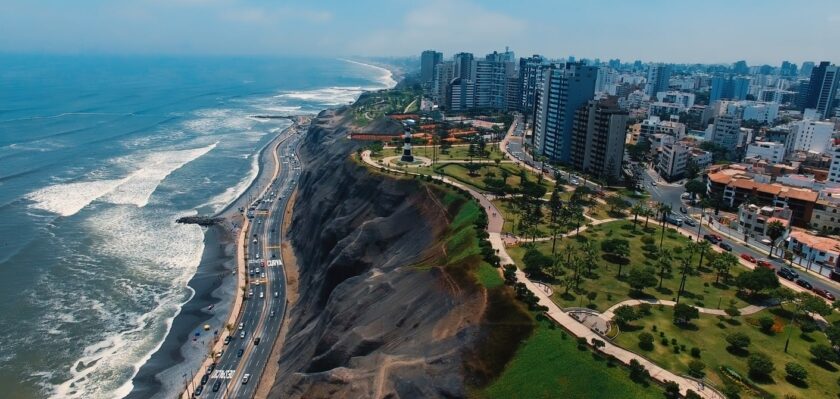
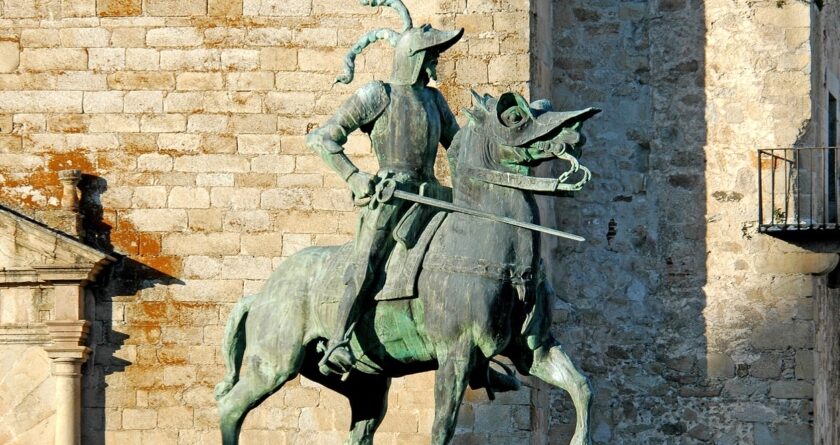
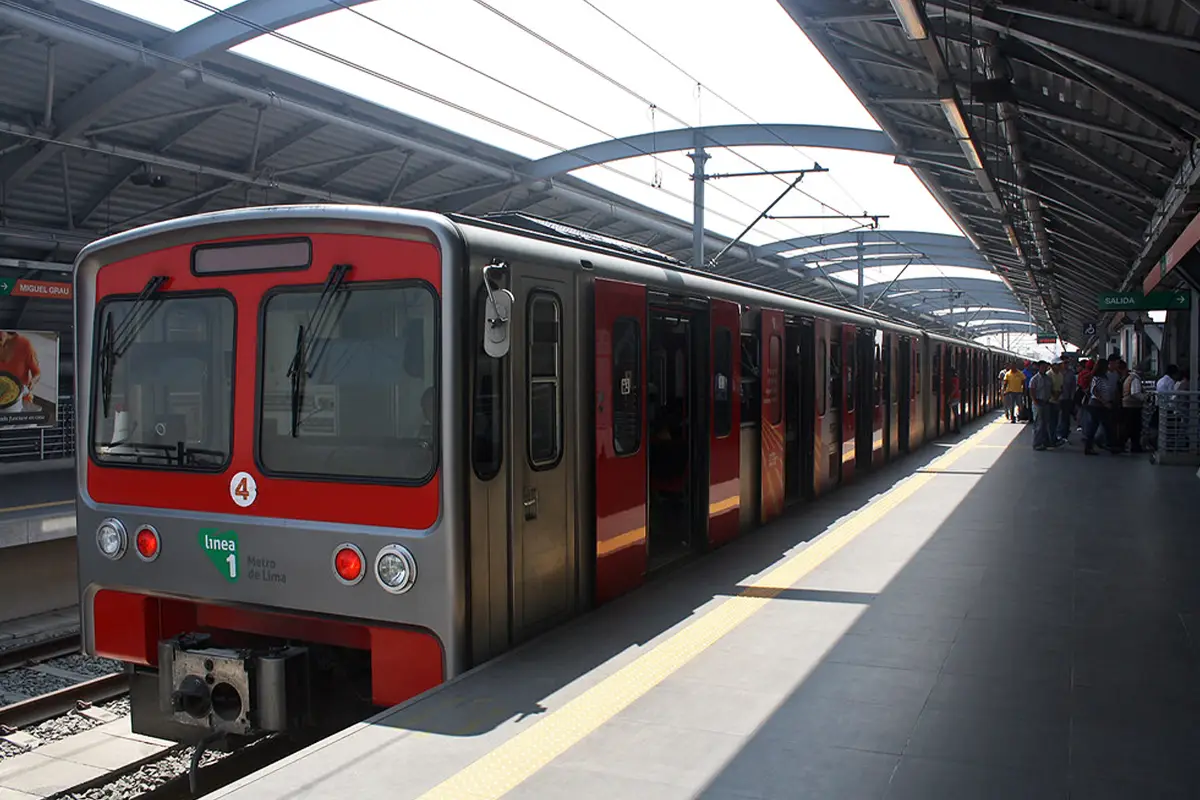
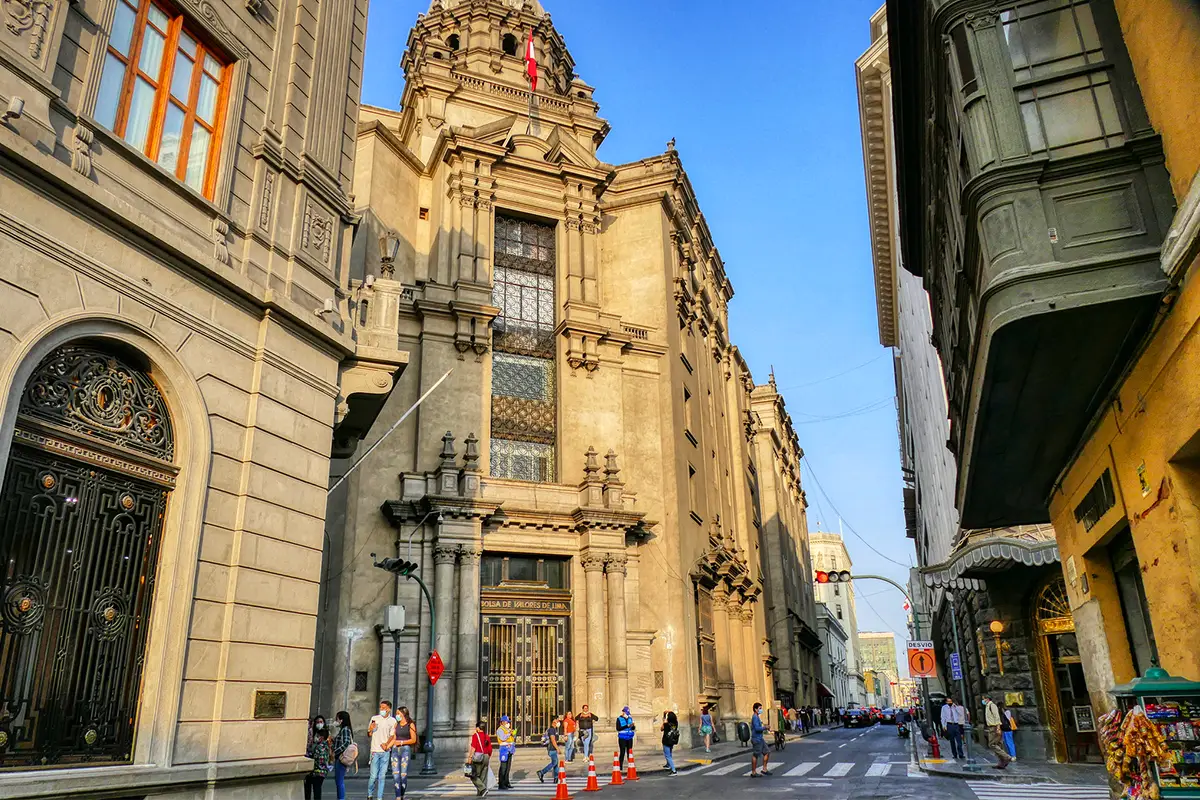
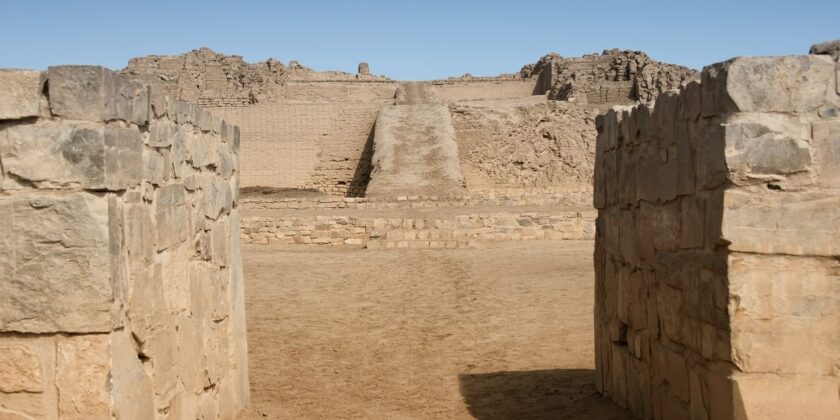
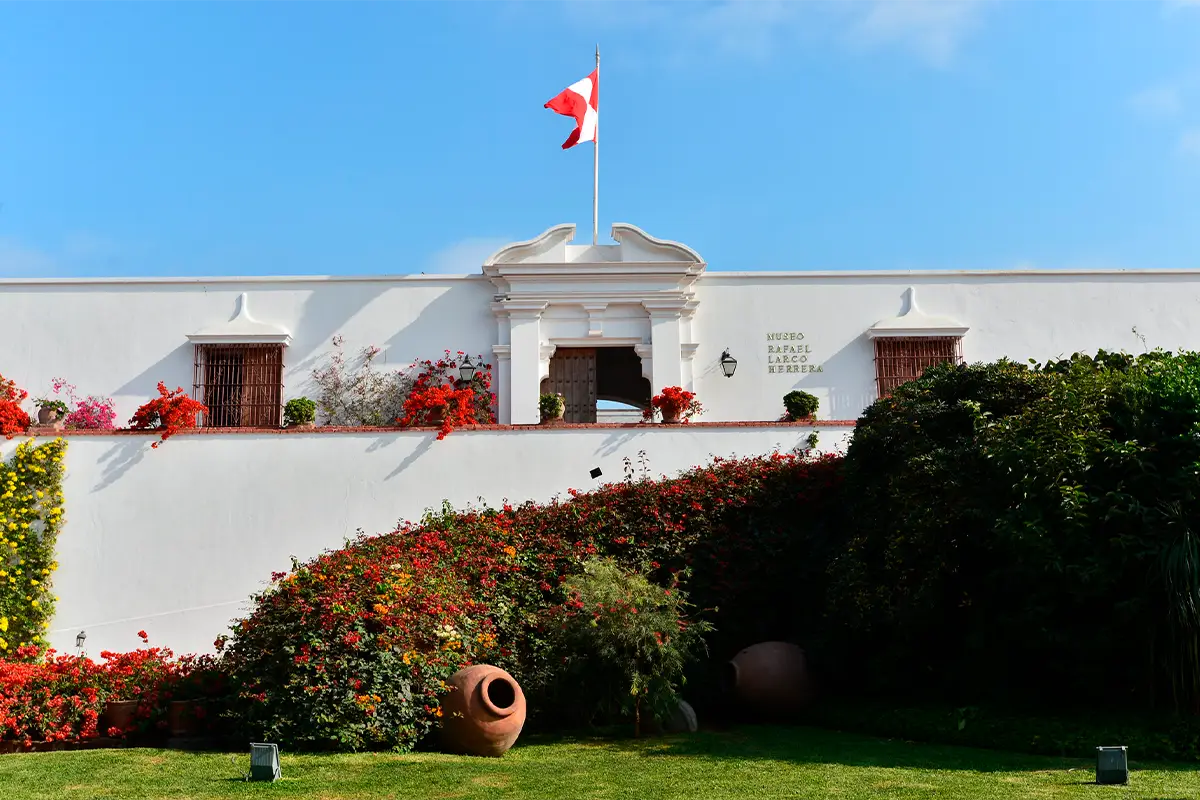

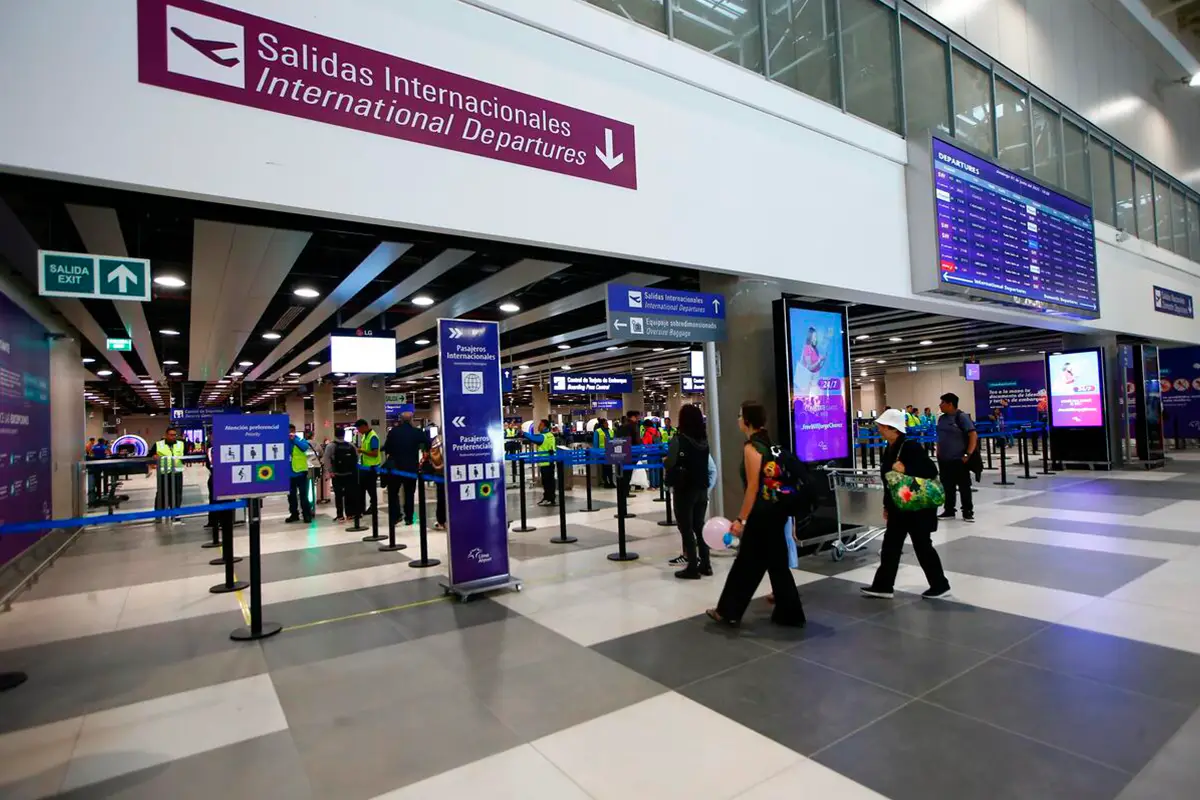

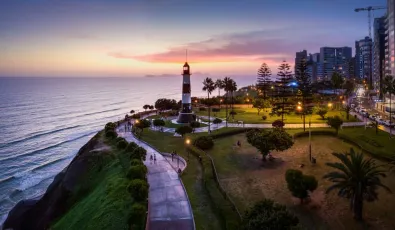
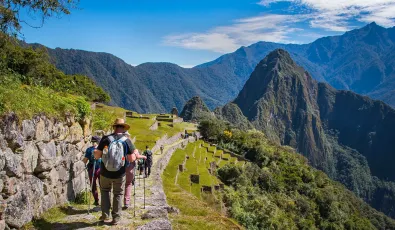
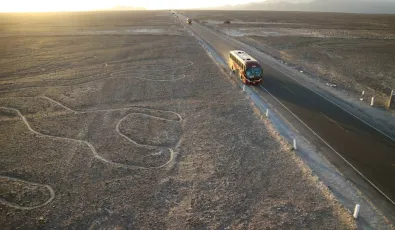
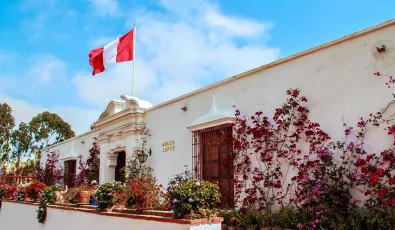
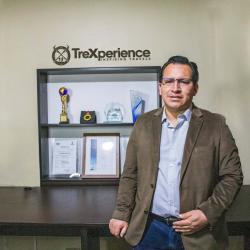
canadian pharcharmy
Terrific article! This is the type of info that are meant to be shared around the net. Shame on the seek engines for now not positioning this post upper! Come on over and visit my web site . Thank you =)
Add new comment